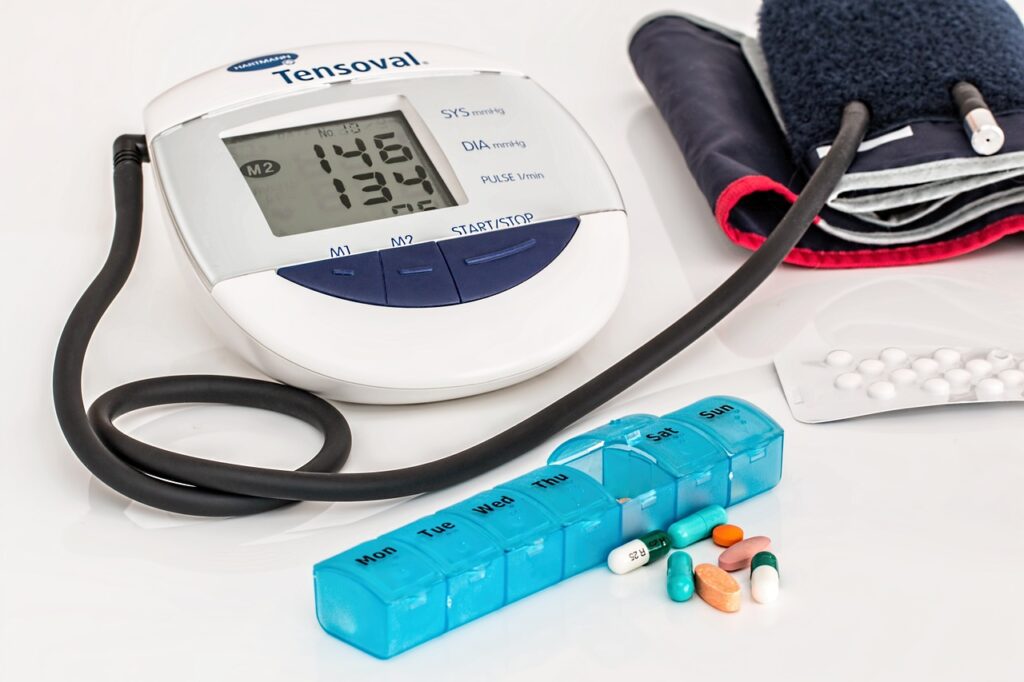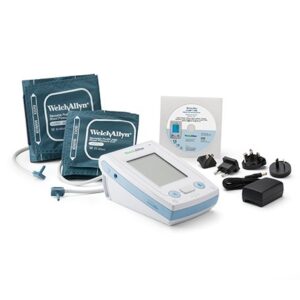Cardiovascular diseases affect the way blood is pumped and circulated throughout the body. When a medical professional informs you that you have heart disease, they may be referring to one of several conditions that can affect either the heart or blood vessels. There are numerous varieties of heart disease, which will be discussed in detail below.

Heart Failure
Heart failure happens when the heart is unable to pump blood efficiently enough to satisfy the body’s requirements.
The heart is crucial for delivering blood and oxygen throughout the body, with its primary responsibility being to ensure that other organs receive adequate blood supply. When heart function declines, it can lead to reduced blood flow to vital organs such as the kidneys, lungs, and brain.
In essence, heart failure affects not just the heart but also has widespread implications for overall bodily function. There are various forms of heart failure; if you’re finding it challenging to understand them all, that’s completely normal. Consulting with a healthcare professional can provide clarity on your situation.
Symptoms
The typical symptoms associated with heart failure include:
- Fatigue
- Swelling in legs or feet
- Weight gain
- Shortness of breath
Causes and Risk Factors
Left-sided heart failure may result from long-term conditions impacting the cardiac muscle, such as coronary artery disease, myocardial infarction (heart attack), valvular heart disease, arrhythmias (irregular heartbeat), or congenital defects affecting the heart.
Additionally, left-sided heart failure can arise when the cardiac muscle becomes too rigid and fails to relax adequately between beats for proper filling with blood; contributing factors include high blood pressure (hypertension), obesity, and diabetes.
Right-sided heart failure occurs when insufficient blood is pumped to the lungs and is frequently a consequence of left-sided failure. It can also stem from congenital anomalies like improperly formed valves or lung-related issues such as chronic obstructive pulmonary disease (COPD).
Coronary Artery Disease Overview
Coronary artery disease (CAD), also known as coronary atherosclerosis, occurs when the arteries that supply blood to the heart become obstructed.
This condition typically arises from the accumulation of cholesterol plaques, which impede blood flow to the heart. Given that the heart is continuously active, it requires a steady flow of blood.
Even a brief interruption in this flow can cause severe pain and harm, leading to ischemia and damage to cardiac tissue. This can result in a myocardial infarction, more commonly referred to as a heart attack—a critical medical emergency that demands urgent attention.
Fortunately, various treatment options are available for coronary artery disease that can help avert serious incidents like heart attacks.
Symptoms of Coronary Artery Disease
Individuals with coronary artery disease frequently experience discomfort or pressure in the chest, shoulders, and back, especially during physical activity or exercise.
Notably, women may exhibit different symptoms compared to men; they might report abdominal pain, throat discomfort, or overall fatigue instead.
Symptoms often do not manifest until the disease has progressed significantly. Therefore, it is essential to collaborate with your healthcare provider on managing risk factors associated with coronary artery disease.
Causes and Risk Factors
The onset of coronary artery disease is linked to plaque formation or blockages within arterial walls. These blockages function like a clog in plumbing systems and hinder proper blood circulation.
Most plaques arise from high cholesterol levels that can deposit on the inner linings of blood vessels over time. Prolonged elevated cholesterol can lead to significant accumulations and large obstructions resulting in ischemia.
You can prevent cholesterol buildup effectively by:
- Adjusting your diet to include more fiber while reducing unhealthy fats.
- Limiting red meat and salt intake
- engaging in regular physical activity—aim for about 30 minutes each day.
Heart Valve Disease
The heart’s valves, which play a crucial role in regulating blood flow and ensuring it circulates properly within the heart. When these valves are affected by disease, they may develop leaks that hinder adequate blood flow or cause backward flow (regurgitation). Another issue can arise when a valve becomes narrowed and constricted (stenotic), restricting blood passage.
Symptoms
Common indicators include fatigue and difficulty breathing. If you find yourself struggling with stairs or feeling unusually exhausted after physical activity, it might be wise to consult a cardiologist for an evaluation of your heart valves.
Causes and Risk Factors
Various factors can lead to valve disease. The most prevalent cause is calcification, which results in stiffening of the valve. The aortic valve is particularly susceptible to this condition, affecting its ability to facilitate blood flow throughout the heart.
As we age, our heart valves tend to become more calcified and rigid. Additional risk factors include smoking and high blood pressure; certain infections can also contribute to valve deterioration.
Congenital Heart Disease
Congenital Heart Disease refers to conditions that exist at birth due to structural changes in the heart during development. These issues are typically identified shortly after birth or within weeks thereafter.
Thanks to advancements in prenatal care, some congenital heart diseases can now be detected during pregnancy before delivery occurs. Most hospitals routinely screen newborns for potential heart disorders.
Symptoms
Infants diagnosed with congenital heart disease may struggle with feeding and can become easily fatigued. They might also experience difficulty in obtaining sufficient oxygen, which can result in a bluish tint to their skin, particularly noticeable around the lips and toes. In cases of severe heart defects, swelling may occur in the hands and feet.
Causes and Risk Factors
The precise origins of many congenital heart diseases remain unclear. However, it is known that numerous cases stem from genetic mutations. Additionally, certain factors such as maternal alcohol or drug consumption during pregnancy can elevate the risk for these conditions. Some medications taken while pregnant may also contribute to an increased chance of developing heart defects.
Cardiomyopathy
Cardiomyopathy refers to a condition where the heart muscle becomes compromised or diseased. Often, the specific cause behind cardiomyopathy is unknown.
It is best understood as a type of heart disease that does not fit neatly into other classifications. This condition can progress to heart failure and comes in various forms depending on how well the heart muscle is functioning and any structural changes that have occurred due to the illness.
Healthcare professionals typically utilize tests like echocardiograms to detect any alterations in the heart’s structure and gain insights into your cardiomyopathy.
Symptoms
Individuals with cardiomyopathy may experience fatigue during physical activities, along with dizziness or feelings of lightheadedness. Some find it challenging to lie flat when resting or ascend stairs comfortably.
Swelling in the feet and legs is common, especially after prolonged sitting periods. Additionally, arrhythmia poses another significant complication associated with cardiomyopathy.
Causes and Risk Factors
Genetic predispositions are common among individuals diagnosed with cardiomyopathy, although the exact reasons why certain people develop this condition remain unclear.
Ongoing research aims to identify those most vulnerable to this heart disease. In some instances, extreme physical or emotional stress can trigger cardiomyopathy, a phenomenon often referred to as broken heart syndrome, which may occur following the death of a loved one.
Heart Infections
Like other organs in the body, the heart is susceptible to infections caused by bacteria, viruses, and various pathogens. Such infections can interfere with the heart’s proper functioning.
Given that the heart is responsible for pumping blood throughout the body, an infection in this organ poses a risk of spreading to other organs. However, early detection and treatment are crucial in managing these infections effectively.
Heart infections are categorized based on their location:
-Endocarditis: Infection of the inner lining of the heart.
-Myocarditis: Infection affecting the heart muscle.
-Pericarditis: Infection involving the outer layer surrounding the heart.
Additionally, infections can affect specific heart valves, potentially leading to valvular heart disease.
Symptoms
The signs of a heart infection often resemble those of other types of infections and may include
- Fever
- Cough
- Chills
- General fatigue
Patients might also experience chest discomfort, difficulty lying down comfortably, or trouble breathing. Some infections can lead to changes in nail or skin color.
Causes and Risk Factors
Individuals who have undergone cardiac surgery or procedures aimed at treating heart conditions face an elevated risk for infection. Those with artificial heart valves are particularly vulnerable as well. Furthermore, intravenous drug use has been linked to an increased likelihood of developing cardiac infections.
When is it necessary to seek urgent medical assistance? Heart disease poses a significant risk and can even be life-threatening. You should obtain medical help if you encounter any of the following symptoms:
- Discomfort, pressure, or pain in the chest, shoulders, arms, neck, back, upper abdomen, or jaw
- Shortness of breath accompanied by fatigue
- A racing sensation in your chest
- Fainting
Common Questions
What medications are prescribed for heart disease?
A variety of drugs are available to assist the heart in functioning properly amid heart disease. These include:
- Beta blockers: Medications that reduce the heart rate for more effective pumping.
- Antihypertensives: Drugs that lower blood vessel pressure to enhance cardiac efficiency.
- Statins: Medications aimed at decreasing cholesterol levels and preventing harmful plaque buildup.
- Diuretics: Often referred to as water pills, these help diminish fluid retention and improve heart function.
Your healthcare provider may recommend taking several of these medications together for optimal results. Although this may seem overwhelming with multiple prescriptions, they work best in combination.
How many types of heart disease exist?
There are more than 30 unique types of heart disease. Many have additional subtypes that add complexity to these conditions. Due to the vast array of heart diseases, there are specialists known as cardiologists who focus exclusively on treating these disorders.
What indicators suggest your heart might be unhealthy?
Signs of an unhealthy heart may include:
- Chest pain
- Fatigue
- Swelling in the feet
- Difficulty breathing
A Note from Dymhealth
Although this compilation focuses on prevalent heart conditions, numerous other types exist that are not included here. Nevertheless, several suggestions mentioned in this list may also be relevant to different heart ailments. Adopting a healthy lifestyle can greatly influence heart health. Consuming a nutritious diet, engaging in consistent physical activity, and controlling risk factors such as hypertension can enhance cardiovascular well-being. Consulting with your healthcare professional or a cardiologist is an excellent way to gain further insights.



